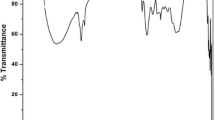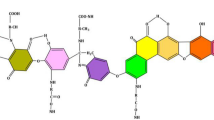Abstract
Quality potable water it is of utmost importance for public health. Coagulation plays an important role in the chemical and physical characteristics and aesthetics of water, to separate suspended solids from water. The present work evaluates four coagulants clarification efficiency in high-turbidity waters, by comparing alternative coagulants such as Moringa Oleifera oily seed extract and recovered aluminum sulfate with commercially available aluminum sulfate. In most cases, apparent color and turbidity removal efficiencies were higher than 90%. Recovered aluminum sulfate showed a better result compared to virgin coagulant for high pHs. Moringa oleifera coagulants are advantageous for their non-impact in final pH, although the difficulty in obtaining large harvest areas precludes their application on a larger scale. Results supported discussions about advantages, disadvantages and limitations of each coagulant and demonstrated the technical feasibility of applying these to high-turbidity waters. This application promoted a superior sustainability index related to water treatment, reducing the costs in comparison with commercial coagulant acquisition, besides decreasing health risks caused by its excessive use.
Similar content being viewed by others
References
ABNT. Brazilian Association of Technical Standards. Project of water treatment plant for public supply. NBR 12216. 1992 (In Portuguese).
Arantes, C. C., Ribeiro, T. A. P., & Paterniani, J. E. S. (2012). Processing of Moringa oleifera seeds using different equipment to obtain coagulant solution. Brazilian Journal of Agricultural and Environmental Engineering,6, 661–666. (In Portuguese).
Ayerza, R. (2012). Seed and oil yields of Moringa oleifera variety Periyakalum-1 introduced for oil production in four ecosystems of South America. Industrial Crops and Products,36, 70–73.
Boulaadjoul, S., Zemmouri, H., Bendjama, Z., & Drouiche, N. (2018). A novel use of Moringa oleifera seed powder in enhancing the primary treatment of paper mill effluent. Chemosphere,206, 142–149.
Carnacho, F. P., Sousa, V. S., Bergamasco, R., & Teixeira, M. R. (2017). The use of Moringa oleifera as a natural coagulant in surface water treatment. Chemical Engineering Journal,313, 2226–2237.
Choy, S. Y., Prasad, K. M. N., Wu, T. Y., Raghunandan, M. E., & Ramanan, R. M. (2014). Utilization of plant-based natural coagulants as future alternatives towards sustainable water -clarification. Journal of Environmental Sciences,26, 2178–2189.
COPASA. Sanitation Company of Minas Gerais. Methodology elaborated by COPASA made available to the Sanitation Laboratory of the Federal University of Itajubá (MG). Consultation on 04/2018 (In portuguese).
Dandolini, I. (2014). Recycling of sludge from water treatment plant - production of coagulant by acid leaching. Master dissertation (Mining, metallurgy and materials engineering). (p. 74). Porto Alegre: Rio Grande do Sul Federal University. (In Portuguese).
Di Bernardo, L., Dantas, A. B., & Voltan, P.E.N. (2011). Treatment of water and residues generated in water treatment stations. In Lidibe (Ed.), Fisrt edn. (p. 454). (In Portuguese).
EBC. Company of Communication. News about water consumption in Brazil. 2018. Available at. http://radioagencianacional.ebc.com.br/geral/audio/2018-02/brasileiro-consome-cerca-de-154-litros-de-agua-por-dia-numero-e-40-maior-do-que. Accessed 20 August 2018. (In Portuguese).
Ernest, E., Onyeka, O., David, N., & Blessing, O. (2017). Effects of pH, Dosage, Temperature and Mixing Speed on The Efficiency of Water Melon Seed in Removing the Turbidity and Colour of Atabong River, Awka-Ibom State, Nigeria. International Journal of Advanced Engineering, Management and Science (IJAEMS),3, 427–434.
Fouad, M. M., Razek, T. M., & Elgendy, A. S. (2017). Utilization of drinking water treatment slurry to produce aluminum sulfate coagulant. Water Environmental Research,89, 186–191.
Garde, W. K., Buchberger, S. G., Wendell, D., & Kupferle, M. J. (2017). Application of Moringa oleifera seed extract to treat coffee fermentation wastewater. Jornal of Hazardous Materials,329, 102–109.
Guimarães, N. C. (2005). Recovery of coagulant from the acidification of waste generated at the manso river water treatment station. Dissertation of master (Sanitation, environment and water resources). Belo Horizonte: Federal University of Minas Gerais.
Jesus, A. R., Marques, N. S., Salvi, E. J. N. R., Tuyuty, P. L. M., Pereira, S. A. (2013). Technical dossier. Cultivation of Moringa oleifera. Euvaldo Lodi Institute. Available at. http://www.respostatecnica.org.br/dossie-tecnico/downloadsDT/Mjc2ODU. Accessed 16 October 2017. (In Portuguese).
Keeley, J., Jarvis, P., & Judd, S. J. (2012). An economic assessment of coagulant recovery from water treatment residuals. Desalination,287, 132–137.
Keeley, J., Jarvis, P., Smith, A. D., & Judd, S. J. (2016). Coagulant recovery and reuse for drinking water treatment. Water Research,88, 502–509.
Keogh, M. B., Elmusharaf, K., Borde, P., & McGuigan, K. G. (2017). Evaluation of the natural coagulant Moringa oleifera as a pretreatment for SODIS in contaminated turbid water. Solar Energy,158, 448–454.
Li, T., Zhu, Z., Wang, D., Yao, C., & Tang, H. (2006). Characterization of floc size, strength and structure under various coagulation mechanisms. Powder Technology,168, 104–110.
Lundin, M., Olofsson, M., Petterson, G. J., & Zetterlund, H. (2004). Environmental and economic assessment of sewage sludge handling options. Resources, Conservation and Recycling,41, 255–278.
Madrona, G. S., Serpelloni, G. B., Vieira, A. M. S., Nishi, L., Cardoso, K. C., & Bergamasco, R. (2010). Study of the effect of saline solution on the extraction of the Moringa oleifera seed´s active component for water treatment. Water, Air, and Soil pollution,211, 409–415.
Moreno, M. M. B., Heredia, J. B., & Gallardo, J. M. (2016). Microalgae removal with Moringa oleífera. Toxicon,110, 68–73.
Moringa Brazil Project (2012). The plant of life. Available at. http://mais.uol.com.br/view/f3y3fvakuqrn/projeto-moringa-a-planta-da-vida_a-arvore-de-deus-04020C9C3570D0A92326?types=A. Accessed 16 October 2017. (In Portuguese).
Muthuraman, G., & Sasikala, S. (2014). Removal of turbidity from drinking water using natural coagulants. Journal of Industrial and Engineering Chemistry,20, 1727–1731.
Nascimento, D., Silva, E. S., Ferreira, M. S., Silva, S. N., & Siqueira, E. C. (2016). Moringa oleifera: A viable alternative for water treatment. CONDIS, I International congress on the diversity of the semi-arid, (p. 12). (In Portuguese).
Ndabigengesere, A., Narasiah, K. S., & Talbot, B. G. (1995). Active agents and mechanism of coagulation of turbid waters using Moringa oleifera. Water Research,29, 703–710.
Piantá, C. A. V. (2008). Use of natural organic coagulants as an alternative to the use of aluminum sulphate in water treatment. Graduation final work (Civil Engineering) (p. 78). Porto Alegre: Federal University of Rio Grande do Sul. (In Portuguese).
SAAE. Autonomous Water and Sewage Service. WTP São Mateus - Water treatment. Available at. http://www.saaesma.com.br/tratamento. Accessed 17 August 2018. (In Portuguese).
Soriani, M. (2015). Efficiency of Moringa oleifera as a natural coagulant in saline solution for water supply. Graduation Work (Environmental Engineering) (p. 74). Londrina: Federal University of Paraná. (In Portuguese).
Teh, C. Y., & Wu, T. Y. (2014). The potential use of natural coagulants and flocculants in the treatment of urban waters. Chemical Engineering Transactions,39, 1603–1608.
Theodoro, J. D. P., Lenz, G. F., Zara, R. F., & Bergamasco, R. (2013). Coagulants and natural polymers: Perspectives for the treatment of water. Plastic and Polymer Technology,2(3), 55–62.
Villaseñor-Basulto, D. L., Sánchez, P. D. A., Olvera, J. D. R., & Bandala, E. R. (2018). Wastewater treatment using Moringa oleifera Lam seeds: A review. Journal of Water Process Engineering,23, 151–164.
Yang, G., Zhang, G., & Wang, H. (2015). Current state of sludge production, management, treatment and disposal in China. Water Research,78, 60–73.
Acknowledgements
We thank the Coordinator of the Improvement of Higher Education Personnel (Coordenação de Aperfeiçoamento de Pessoal de Nível Superior, CAPES; in Portuguese) for the given support, evidenced by Doctor of Science scholarship award granted to Ivan Felipe Silva dos Santos. The authors would like to thank the Brazilian National Council for Scientific and Technological Development (Conselho Nacional de Desenvolvimento Científico e Tecnológico, CNPq; in Portuguese), for granting productivity in research scholarship to Prof. Regina Mambeli Barros (PQ2, Process number: 301986/2015-0). The authors thank Prof. Dr. Herlane Costa Calheiros for the concession of the Laboratory of Sanitation (LabSan) of the Institute of Natural Resources of the Federal University of Itajubá to carry out the experimental analyses and the NGO Movimento Verde Paracatu for the seeds availability of Moringa Oleifera seeds without costs.
Author information
Authors and Affiliations
Corresponding author
Additional information
Publisher's Note
Springer Nature remains neutral with regard to jurisdictional claims in published maps and institutional affiliations.
Rights and permissions
About this article
Cite this article
Rocha, V.V.F., dos Santos, I.F.S., Silva, A.M.L. et al. Clarification of high-turbidity waters: a comparison of Moringa oleifera and virgin and recovered aluminum sulfate-based coagulants. Environ Dev Sustain 22, 4551–4562 (2020). https://doi.org/10.1007/s10668-019-00397-2
Received:
Accepted:
Published:
Issue Date:
DOI: https://doi.org/10.1007/s10668-019-00397-2




